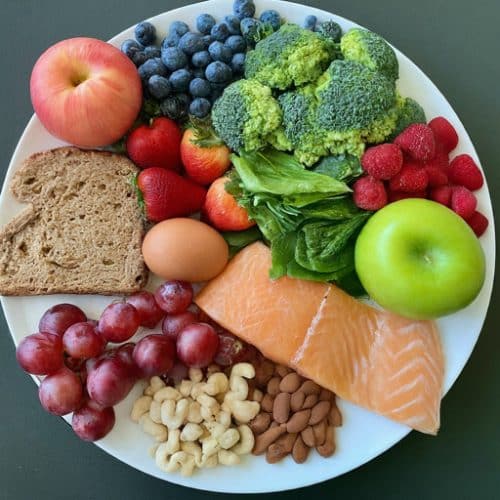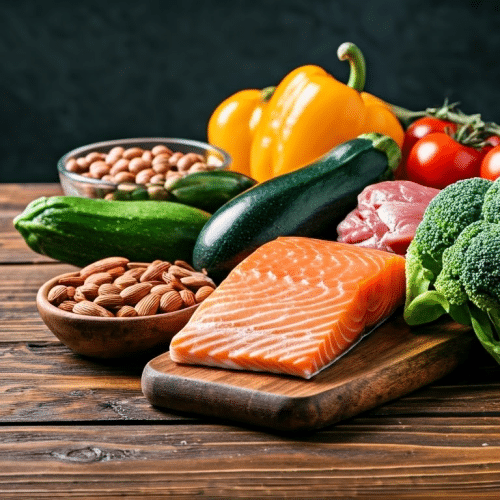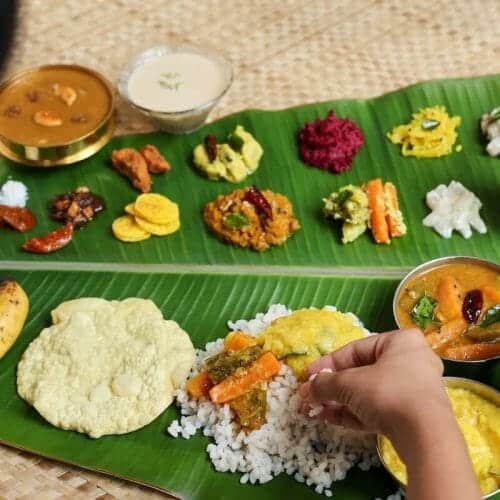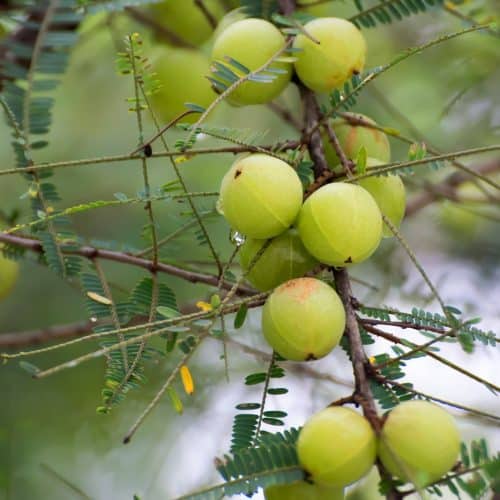West Bengal, a state in eastern India, is known for its rich cultural heritage, beautiful landscapes, and delicious cuisine. Bengali cuisine, also known as “Bangla Ranna,” is a culinary treasure that reflects the unique flavour palate of the region. From mouth-watering fish dishes to delectable sweets, Bengali food delights the taste buds. It captivates food enthusiasts from around the world.
The Richness of Bengali Cuisine
Bengali cuisine is known for its culinary heritage, passed down through generations. It is a cuisine that combines a unique blend of flavours, spices, and cooking techniques, resulting in dishes with a distinct and delicious taste. Bengali cuisine is a true reflection of the region’s rich culinary traditions, from the use of mustard oil and nigella seeds to the incorporation of coconut milk and poppy seeds. Whether it’s a spicy fish curry or a sweet delicacy, each dish showcases the unique flavour profile that Bengali cuisine is famous for.
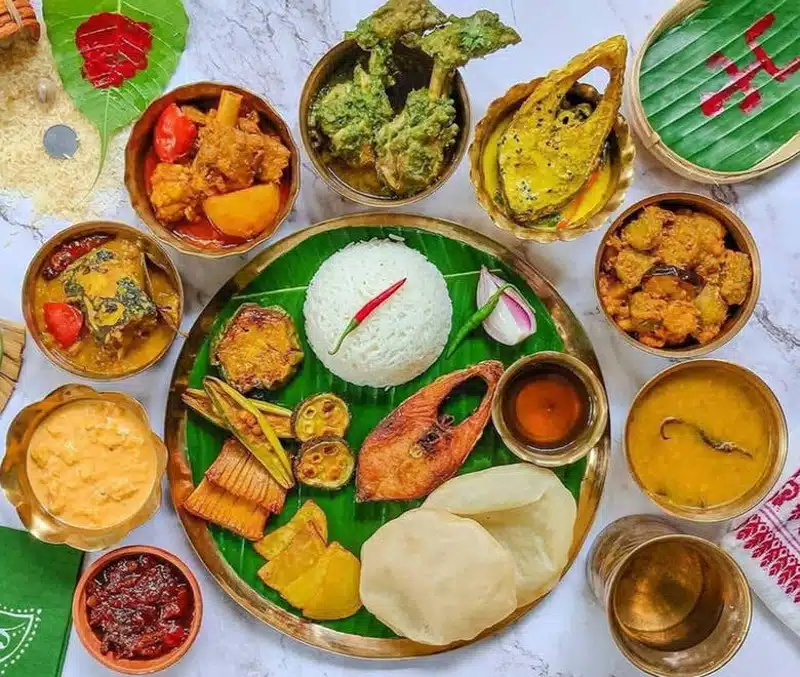
Bengali Cuisine
The Influence of Geography on Bengali Cuisine
The geography of Bengal, with its fertile plains, abundant rivers, and long coastline, significantly shapes the region’s cuisine. Bengali cuisine is characterised by its emphasis on freshwater fish like rohu and hilsa, readily available in the rivers of Bengal. Seafood, including saltwater fish like pomfret and prawns, is also popular, reflecting the culinary influence of the coastal areas of Bengal.
In the form of milk and grated, coconut is a common ingredient in Bengali dishes, adding a subtle sweetness and richness to curries and desserts. Mustard oil, another staple of Bengali cuisine, brings a unique flavour and aroma to dishes, enhancing their taste.
Additionally, the use of banana leaves for serving food is a tradition in Bengal, owing to the region’s tropical climate. The banana leaves infuse a subtle, earthy flavour into the food, adding a visual appeal to the dining experience.
Furthermore, the fertile land of Bengal is also responsible for the abundance of vegetables used in Bengali cuisine. Bengali dishes are often a colourful medley of flavours and textures, from potatoes and eggplants to bitter and bottled gourd.
The geography of West Bengal, with its diverse landscapes, has had a profound impact on the region’s culinary heritage, making Bengali cuisine a harmonious blend of flavours, spices, and ingredients.
Festive Specials: Durga Puja and Eid Delicacies
Bengal is renowned for its vibrant festivals, and Durga Puja and Eid celebrations bring forth a myriad of traditional Bengali delicacies. These special occasions are a culinary extravaganza showcasing the best of Bengali cuisine.
During Durga Puja, a major festival in Bengal, Bengali homes are filled with the aroma of traditional dishes prepared with love and care. From mutton curry and kosha mangsho (slow-cooked meat) to biryani, the festive spread during Durga Puja is a feast for the senses. Bengali sweets, or mishti, are an integral part of the festivities, with delicacies like Sandesh, rosogolla, and mishti doi taking centre stage.
Similarly, Eid celebrations in Bengal are marked by various mouth-watering dishes. From delicious kebabs and biryanis to sweet treats like sheer khurma and kheer, Bengali homes showcase their culinary prowess during this festive season.
Some popular Bengali dishes enjoyed during Durga Puja and Eid include:
- Mutton curry: A flavorful and aromatic dish made with tender mutton pieces, slow-cooked in a spicy curry.
- Kosha mangsho: A traditional Bengali dish where the meat is marinated in a blend of spices and slow-cooked until it is tender and flavoursome.
- Biryani: Fragrant rice cooked with succulent meat, aromatic spices, and potatoes, resulting in a delicious one-pot meal.
- Mishti doi: A sweet, creamy dessert made by fermenting sweetened milk, often served in earthen pots to enhance flavour.
- Sandesh: A famous Bengali sweet made from chenna (curdled milk) and sugar, often flavoured with fruits and spices.
- Durga Puja and Eid are a time for religious observances and a celebration of Bengali cuisine, where friends and family come together to savour the flavours of traditional dishes and indulge in sweet delights.
Decoding the Bengali Meal Sequence
A Bengali meal is a unique culinary experience, with a carefully curated sequence of dishes that reflects the cultural and culinary heritage of the region. The meal typically begins with a bitter dish, such as shukto, to stimulate the palate. It is followed by a dal dish, rice, and a main course that includes fish, meat, or vegetables. To balance the flavours, Bengali meals often culminate with a sweet dish, such as mishti doi or roshogolla. The sequence of a Bengali meal is a testament to the integral role food plays in Bengali culture and traditions.
Essential Ingredients that Define Bengali Cuisine
The ingredients used in Bengali cuisine are central to its unique flavour and culinary identity. Mustard, cumin, nigella, and poppy seeds are essential spices and seeds that define Bengali dishes.
Mustard seeds, or shorshe, are a vital ingredient in Bengali cuisine, used as a whole spice and as mustard paste. The pungent and sharp flavour of mustard seeds adds depth and complexity to dishes, such as shorshe ilish (hilsa fish in mustard gravy) and shorshe bata murgi (mustard chicken curry).
Cumin seeds, or jeera, are another commonly used spice in Bengali cuisine, known for their warm and earthy flavour. They are often tempered in hot oil or ghee to release their aroma before adding to dishes like dal and vegetable curries.
Nigella seeds, or kalo jeera, are tiny black seeds with a slightly bitter and nutty flavour. They are usually dry-roasted or tempered in oil to bring out their unique taste. They are commonly used in dishes like shore hinge posto (ridge gourd in mustard-poppy seed gravy) and aloo posto (potatoes in poppy seed gravy).
Poppy seeds, or posto, are a staple ingredient in Bengali cuisine, known for their sweet and nutty flavour. They are often ground into a paste, thickened, and flavoured into curries, such as posto bora (poppy seed fritters) and posto chingri (prawns in poppy seed gravy).
Mustard oil, or shorshe tel, is the preferred cooking oil in Bengali cuisine, adding a distinct flavor and aroma. It is used for tempering, frying, marinating, and infusing dishes with its unique taste.
In addition to these spices and seeds, Bengali cuisine incorporates a variety of other spices, such as turmeric, red chilli powder, and ginger, to create a flavorful and aromatic culinary experience.
Unique Culinary Styles: A Look at Bengali Households
Bengali households take immense pride in their culinary traditions, which generations of home cooks have shaped. The Bengali kitchen is a hub of activity, filled with the aromas of spices, simmering curries, and sweets prepared with love and care. Bengali homes are a treasure trove of traditional recipes, often passed down through generations, showcasing the region’s culinary heritage. The art of cooking traditional Bengali dishes is integral to daily life in Bengali homes, creating a sense of community and connection through food.
Exploring Mouth-Watering Bengali Dishes
Bengali cuisine offers many mouth-watering dishes that capture the essence of the region’s culinary heritage. Each delicacy represents a unique blend of spices, ingredients, and cooking techniques, from flavorful fish curries to aromatic rice dishes. Bengali dishes are known for their bold flavours, rich gravies, and a perfect balance of sweet, sour, and spicy notes. Let’s delve into the world of popular Bengali dishes and explore the delicious flavours that await.
Lau Patai Pabda Paturi: A Unique Fish Dish
Lau patai pabda paturi is a unique fish dish showcasing Bengali cuisine’s culinary expertise and creativity, especially in fish preparations. This traditional dish features pabda fish cooked in a banana leaf with a flavorful mustard and poppy seed paste. The fish spicy mustard and poppy seed marinade are delicately wrapped in a banana leaf and steamed to perfection, resulting in a dish rich in flavours and textures.
The banana leaf imparts a subtle, earthy aroma to the fish, enhancing its taste and presentation. The mustard and poppy seed paste adds a piquant and nutty flavour, complementing the delicate flavour of the fish. The combination of spices and the unique cooking method creates a dish that is both delicious and visually appealing.
Lau patai pabda paturi is a delightful Bengali dish highlighting the culinary techniques and flavor profiles that make Bengali cuisine special. Whether enjoyed as a part of a traditional Bengali meal or as a standalone dish, lau patai pabda paturi is a true culinary masterpiece.
The Famous Calcutta Biryani
Calcutta, now known as Kolkata, is famous for its unique cuisine, and the Calcutta biryani is a shining example of the city’s culinary prowess. This flavorful rice dish is a favourite among food enthusiasts in India and abroad.
The Calcutta biryani is a culinary masterpiece that combines fragrant Basmati rice, tender mutton, aromatic spices, and a touch of saffron, all cooked together in a sealed pot. The slow-cooking process allows the flavours to meld, resulting in a delectable symphony of taste.
One of the distinctive characteristics of the Calcutta biryani is its subtle sweetness, achieved through adding sugar syrup. This subtle sweetness sets it apart from other regional variations of biryani and gives it a unique flavour profile.
The culinary heritage of Bengal is exemplified in the meticulous layering of rice, meat, and spices in the Calcutta biryani. Each bite of this delicious dish is a burst of flavour, making it a must-try for anyone visiting Kolkata.
The Calcutta biryani is a testament to the culinary artistry of Kolkata, showcasing the city’s love for flavoursome food. Whether enjoyed at a traditional Bengali wedding or in a popular restaurant, the Calcutta biryani will leave a lasting impression on your taste buds.
Macher Chop: The Bengali Fish Croquette
Macher chop, a popular Bengali delicacy, is a delicious fish croquette that perfectly showcases Bengali cuisine’s love for fish-based dishes. This delectable snack, often found on the streets of Kolkata, is a must-try for any seafood lover.
Macher chop is made by mincing fish, typically the head of a freshwater fish, along with spices, onions, and herbs. The mixture is then shaped into small patties, coated in breadcrumbs, and deep-fried until golden and crispy.
The fish head is preferred for macher chop due to its tender and flavorful meat, which adds a unique taste to the dish. The spices used, such as cumin, ginger, and chilli powder, enhance the fish’s natural flavours and give the croquettes their signature taste.
Macher chop is often enjoyed with a tangy chutney or sauce, adding a delightful flavour contrast. The crisp exterior gives way to a succulent and flavorful interior, making it a satisfying snack or appetiser. Whether enjoyed on the go or as a part of a Bengali feast, macher chop is a true culinary delight.
Chingri Malaikari: The Creamy Prawn Curry
Chingri malaikari, a classic Bengali dish, is a creamy prawn curry that captures the essence of Bengali cuisine. This delectable curry is made with succulent prawns cooked in a rich, flavorful gravy of coconut milk and aromatic spices.
Chingri malaikari exemplifies the unique flavour palate of Bengali cuisine, combining the sweetness of coconut milk, the richness of spices, and the delicate flavour of prawns. The gravy is made by cooking a paste of coconut, spices, and onions, then simmered with prawns until they are cooked to perfection.
The dish is often garnished with fried coconut flakes, adding a crunchy texture and enhancing the coconut flavour of the curry. The creamy and aromatic curry pairs perfectly with steamed rice, creating a wholesome and satisfying meal.
Whether enjoyed at a traditional Bengali feast or in a local eatery, chingri malaikari is a culinary delight that showcases the richness and diversity of Bengali cuisine. The combination of flavours and textures in this dish will leave you craving more.
The Staple Bengali dish: Macher Jhol
Macher jhol is a quintessential Bengali fish curry. It is a beloved staple in Bengali homes, known for its comforting and aromatic flavours. It is a dish that reflects the essence of traditional Bengali cuisine, emphasising fresh ingredients and simple yet delicious preparations.
In Bengali, “macher” translates to “fish”, and “jhol” means “curry.” Macher jhol typically features freshwater fish, such as rohu or hilsa, cooked in a light and flavorful curry broth. The curry is made by tempering spices like mustard seeds, cumin, and ginger and simmering the fish in a blend of spices, tomatoes, and a touch of turmeric, resulting in a fragrant and flavorful dish.
The dish is often enjoyed with a serving of white rice, creating a wholesome and satisfying meal experience. The delicate flavours of the fish curry, combined with the aromatic spices, make macher jhol a proper comfort food for Bengalis.
Macher jhol is a dish that holds a special place in Bengali culture and is integral to traditional Bengali cuisine and social gatherings. It showcases the culinary prowess of Bengali kitchens, presenting a delightful blend of flavours, spices, and culinary expertise.
The Importance of Lentils: Chana Dal
Lentils, or dal, are a staple ingredient in Bengali cuisine, and chana dal holds a special place in Bengali households. Chana dal, or split Bengal gram, is a nutritious and versatile lentil that plays a significant role in Bengali cooking.
Chana dal is prepared by splitting Bengal gram into halves, which results in a lentil variety that is smaller and denser than other types of dal. It is rich in protein, fibre, and essential nutrients, making it a popular choice for a balanced diet.
In Bengali cuisine, chana dal is often used to prepare various dishes, including dal, fritters, and lentil-based curries. The lentils are cooked until they are soft and tender, and then spices, herbs, and other ingredients are added to elevate the flavours.
Chana dal is an integral component of a traditional Bengali meal, offering a protein-rich addition to the dining table. Whether it’s a simple chana dal curry or a spicy dal fry, Bengali cuisine relies on lentils like chana dal to create delicious and nutritious dishes.
The versatility and nutritional benefits of chana dal make it an essential part of Bengali cuisine, showcasing the region’s love for lentils and legumes. Whether enjoyed as a main course or a side dish, chana dal adds a wholesome element to any Bengali meal.
The Popular Ilish Macher Paturi
Ilish macher paturi is a popular traditional Bengali dish that celebrates the unique flavours of hilsa fish, a prized delicacy in Bengali cuisine. This delectable dish is made by marinating hilsa fish in a flavorful mustard and poppy seed paste, wrapping it in banana leaves, and then steaming or grilling it to perfection.
The hilsa fish, with its delicate yet distinct flavor, pairs perfectly with the mustard and poppy seed marinade, creating a rich dish of taste and texture. Mustard oil, a quintessential ingredient in Bengali cuisine, is used to enhance the flavours of the fish.
Using banana leaves to wrap the fish adds a subtle, earthy aroma to the dish, infusing it with a unique flavour. The banana leaves also help keep the fish moist and tender during cooking, resulting in a succulent and flavorful dish.
Ilish macher paturi is a dish that exemplifies the culinary heritage of Bengali cuisine, showcasing the region’s love for seafood and traditional cooking techniques. Whether enjoyed as a part of a traditional Bengali meal or at a grand celebration, ilish macher paturi is a true delicacy that captures the essence of Bengali cuisine.
The Tangy Aam Tel Ilish
Aam tel ilish is a delicious Bengali dish celebrating raw mangoes‘ tangy and sweet flavours. This traditional dish features hilsa fish, a prized delicacy in Bengali cuisine, cooked in mustard and raw mango curry, resulting in a delightful burst of flavours.
The hilsa fish, known for its delicate flavour and buttery texture, pairs perfectly with the mustard and raw mango curry, creating a unique flavour combination. The curry is made by grinding mustard seeds, chilli, and spices and then simmering it with pieces of raw mango to create a tangy and spicy gravy.
The dish is popular during Bengali New Year celebrations, as raw mangoes are abundantly available. The tangy and sweet notes of the raw mangoes and the pungency of mustard seeds create a flavour profile that is both refreshing and satisfying.
Aam tel ilish is a dish that showcases the culinary expertise of Bengali cuisine, combining traditional flavours and ingredients deliciously and imaginatively. Whether enjoyed as part of a festive feast or a special occasion, aam tel ilish is a culinary delight that captures the essence of Bengali cuisine.
The Mixed Vegetable Stew: Shukto
Shukto is a traditional Bengali mixed vegetable stew that exemplifies Bengali cuisine’s unique blend of bitter and sweet flavours. This palate-pleasing dish features a medley of vegetables, such as bitter gourd, bottle gourd, and eggplant, cooked in a mildly spiced, creamy gravy.
Bitter gourd, known for its distinct bitter taste, is one of the critical ingredients in shukto. It adds a unique flavour profile to the dish, balanced by the sweetness of bottle gourd. This vegetable is also a central component of shukto. Adding other vegetables, such as potatoes, beans, and carrots, adds a colourful medley of flavours and textures.
Shukto is often enjoyed as a part of a traditional Bengali meal, where its bitter-sweet taste serves as a palate cleanser before the main course. The spices used, such as mustard, ginger, and poppy seeds, add depth and complexity to the dish, elevating its flavours.
This mixed vegetable stew represents Bengali culinary traditions, offering a unique blend of bitter, sweet, and savoury flavours. Whether enjoyed by itself or paired with rice, shukto is a dish that showcases the diversity of Bengali cuisine and the region’s culinary heritage.
Shorshe Ilish – Hilsa Fish With Mustard Gravy
Shorshe ilish, a classic Bengali dish, features hilsa fish cooked in a rich and piquant mustard gravy. This signature dish epitomises the unique flavour profile of Bengali cuisine, highlighting the region’s culinary prowess.
Hilsa fish, with its delicate flavour and buttery texture, is a prized delicacy in Bengali cuisine, and shore ilish showcases this fish in all its glory. The mustard gravy, made by grinding mustard seeds, chilli, and spices, infuses the hilsa fish with a pungent and robust flavour, creating a rich, aromatic, and delicious dish.
The mustard seeds, a signature ingredient in Bengali cuisine, add depth, heat, and a unique tanginess to the dish. The traditional cooking technique of shorshe ilish involves marinating the fish in the mustard gravy, allowing the flavors to permeate the fish and create a harmonious blend of taste and texture.
Shorshe ilish is a popular choice for special occasions, celebrations, and festive feasts, where it takes centre stage and leaves a lasting impression on the taste buds of those who indulge in its culinary delights. It exquisitely captures the essence of Bengali cuisine, showcasing the region’s love for hilsa fish and the pungency of mustard seeds.
Jhal muri
Jhal muri, a popular Bengali street food, is a spicy and savoury snack that has won the hearts of many with its delightful flavours. This beloved dish can be found on the streets of Kolkata and is a favourite among locals and tourists alike.
Jhal muri is a simple yet delicious combination of puffed rice, spices, and assorted crunchy ingredients. It is a popular choice for a quick and flavorful snack, as it is easy to prepare and bursts with bold, spicy flavours.
The dish is made by mixing puffed rice with chopped onions, tomatoes, coriander leaves, green chillies, and a sprinkle of special spice mixtures, such as bhaja mobile, a blend of roasted spices. The result is a medley of textures, flavours, and aromas, making jhal muri an authentic taste sensation.
The unique spice blend sets jhal muri apart, adding special heat and tanginess to the dish. Each bite of jhal muri is a flavour explosion, with the crispy puffed rice complementing the spicy, tangy, and aromatic spices.
Jhal muri is a delicious snack and a culinary experience that exemplifies the vibrancy of Bengali street food culture. Whether enjoyed on the bustling streets of Kolkata or homemade, jhal muri is a favourite among food enthusiasts seeking a quick, spicy, and satisfying culinary treat.
The Sweet Side of Bengal: Desserts
Bengali cuisine is known for its unique and delectable sweets, mishti, which add a sweet note to any Bengali meal. These sweets, made with love and care, are a testament to the culinary richness of Bengal and its cultural significance.
One iconic Bengali sweet is mishit doi, a sweetened fermented yoghurt dessert. This creamy delicacy is sweetened with jaggery or sugar, giving it a unique flavour profile. It is often served chilled in earthen pots, enhancing its taste and texture.
Another famous Bengali sweet is rasgulla, a soft and spongy cheese-based sweet. It is made by boiling chenna, a fresh cheese, in a sugar syrup until it becomes light and fluffy. Rasgulla is a popular choice for celebrations, special occasions, and festivals, symbolising the sweet side of Bengali cuisine.
Other Bengali sweets, such as Sandesh, roshogolla, and mishti doi, are also a part of Bengal’s culinary heritage and are cherished for their unique flavours, textures, and cultural significance. Bengali sweets are a treat for the taste buds, offering a sweet ending to a delicious Bengali meal.
The Iconic Bengali Sweet: Rasgulla
Rasgulla is an iconic Bengali sweet that has gained popularity worldwide for its delicious taste and unique texture. This soft and spongy cheese-based sweet is famous for celebrations, festivals, and special occasions.
Rasgulla, also known as roshogolla, is made by kneading chenna, a fresh cheese made from curdled milk, and shaping it into small balls. These balls are then cooked in a sugar syrup until they become light, fluffy, and soaked with sweetness.
The sugar syrup, infused with cardamom or rose water, gives rasgulla its distinctive flavour and aroma. Each bite of rasgulla is a burst of sweetness, delicately balanced by the mild tang of chenna.
This famous Bengali food is a delight to the taste buds, offering a symphony of flavours and a melt-in-your-mouth experience. Whether chilled or at room temperature, rasgulla is a sweet treat that captivates food enthusiasts and showcases the culinary excellence of Bengali cuisine.
The Creamy Delight: Ras Malai
Ras Malai, a beloved Bengali dessert, comprises cheese balls immersed in sweetened milk, originating from Bengal during the Mughal era. These cheese balls, also known as chenna, are formed by curdling milk and shaping it into a dough-like consistency. Typically infused with cardamom, saffron, and rose water, Ras Malai offers an enticing aroma. Best enjoyed cold, this creamy delight is often adorned with chopped nuts like almonds or pistachios, adding a delightful crunch to each bite. Its rich history and delectable flavours make Ras Malai a must-try for anyone seeking to savour the essence of Bengali cuisine.
Why is Bengali Cuisine a Must Try?
Bengali cuisine is a must-try because of its unique flavours and spices. It showcases a delightful blend of seafood, meats, vegetables, and rice in its dishes. Influenced by the region’s rich history and culture, Bengali sweets like rasgulla and sandesh are renowned across India.
Frequently Asked Questions
Which is the famous food festival of West Bengal?
Durga Puja, the most famous food festival in West Bengal, takes place in September or October. Pandals are set up across the state where various Bengali delicacies like luchi-alur dom, kosha mangsho, and chholar dal are served. The festival lasts for several days, offering a gastronomic delight to all.
How has the geography of the region influenced the cuisine?
The geography of the region has had a profound influence on Bengali cuisine. The proximity to the sea has resulted in the abundant use of seafood. At the same time, the fertile land and rivers have led to an emphasis on vegetables and fish. The hot and humid climate has made spices, especially mustard, popular. The cuisine also reflects influences from neighbouring countries like Bangladesh and Nepal.
How does West Bengal cuisine differ from other regional cuisines in India?
West Bengal cuisine stands out with its unique blend of Bengali culture and geography. The use of mustard oil and panch phoron sets it apart from other regional cuisines in India. The coastal location of West Bengal also contributes to the prominence of seafood dishes. And let’s remember the delightful sweets like rasgulla and sandesh, a hallmark of Bengali cuisine.
What is the significance of sweets in West Bengal cuisine?
Sweets play a vital role in West Bengal cuisine, integral to meals and celebrations. Bengali sweets are famous for their unique flavours, textures, and use of ingredients like chenna, khoya, and jaggery. Popular sweets include rasgulla, sandesh, mishti doi, and rosogolla. They are often offered as prasad during religious ceremonies or exchanged as gifts during festive occasions.
Conclusion
In conclusion, Bengali cuisine is a true delight for food enthusiasts. The richness of flavours and ingredients is genuinely remarkable, from the influences of the region’s geography to the unique culinary styles found in Bengali households. Whether the mouth-watering fish dishes like Lau Patai Pabda Paturi and Chingri Malaikari or the famous Calcutta Biryani, each dish tells a story of tradition and love for food. And let’s not forget about the sweet side of Bengal, with iconic desserts like Rasgulla and Ras Malai. If you’re a food lover, Bengali cuisine is a must-try. So dive into the world of Bengali food and indulge in the magical flavours that will leave you craving more.









